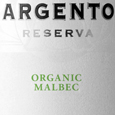It seems like every humble grape has its own international day of celebration now.
Malbec, however, was one of the first to be singled out and highlighted, fittingly, from Wines of Argentina, the black grape's ex-pat homeland. Approximately 75 percent of the world’s malbec plantings are in Argentina, with the majority planted in and around Mendoza.
Marking its seventh anniversary in 2017, Malbec World Day will be celebrated April 17 with events in more than 70 cities and 50 countries around the globe, including Vancouver.
Though the black, densely flavoured grape is native to the Sud Ouest of France, and one of the six stars of the Bordeaux blend, it has fallen steeply in plantings and popularity in France. Today the black plum, savoury and tannic wines of Cahors are the main centre for the grape in its native land.
It is Argentina where the grape currently rules supreme. Here, tucked against or astride the sunbaked Andes, malbec showcases full-bodied, intense fruit-forward flavours of blueberry and black plum, backed up by cocoa, smoke and spice across a velvety texture. Over the past decade, the approachability, ripe fruit and low price point of Argentine malbec rapidly gained it many fans worldwide. 35% of the hectares planted in Argentina are malbec.
Modern malbec continues to strive upwards, in altitude, and outwards, to new frontiers. The push towards quality has lead many vintners to investigate new terroirs often at great heights, resulting in Argentina claiming home to more high-altitude vineyards than anywhere else on the planet. Malbec benefits from the cooler evenings at higher elevation, with the greater diurnal shift increasing acidity and preserving fresh fruit. Watch for labels citing Mendoza sub appellations of note including Uco Valley, Maipú, San Rafael and Lujan de Cuyo. Outside of Mendoza, keep an eye out for San Juan and La Rioja to the north, the high altitude plantings in Argentina’s far northeastern corner of Catamarca, Jujuy and Salta, and the southern regions of Patagonia, the Río Negro and Neuquén – the latter trio especially promising for cool climate grapes and sparkling wines.
Here are ten of our top Argentine malbecs tasted at GOW over the past year (and ties), showing diversity of style, region and price.

 quicksearch
quicksearch





















